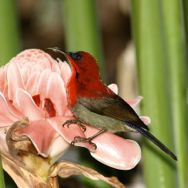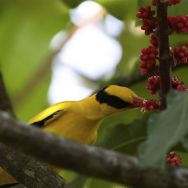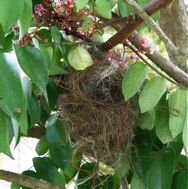In the next three days we will be making available on this website three major documents on plant-bird relationship.



[feeding on nectar, from left (bird-plant): Crimson Sunbird-Etlingera elatior, Javan Myna-Schefflera actinophylla, Yellow-naped Oriole-Schefflera actinophylla]
1. The first is a list of 349 species of plants that birds visit to obtain shelter, food, nest material, nesting site, etc.
2. The second is a list of 230 species of birds. Listed under each bird are the different plants visited for shelter, food, nest material, nesting sites, etc.
3. The third is a list of references referred to in the compilation of the above two lists.
![d. MynaJv-Cissus hastata [YCWee]-3](https://besgroup.org/wp-content/uploads/d.-MynaJv-Cissus-hastata-YCWee-3.jpg)


[feeding on fruit, from left (bird-plant) – Javan Myna-Cissus hastata; Black-naped Oriole-Epipremnum pinnatum; Large-billed Crow-Rhopaloblaste ceramica]
Contributions by nature enthusiasts to the BESG website since its inception in July 2005 have made these lists possible. In addition, data from a handful of local popular books and colonial publications on birds of the region have been included.



[nest-site, from left (bird-plant) – Scarlet-backed Flowerpecker-Horsfieldia sp., House Crow-Peltophorum pterocarpum, Tailorbird-Averrhoa carambola]
The lists are open ended and will be updated from time to time.
It is not difficult to identify birds using field guides. Plant identification is more difficult, especially in the absence of flowers and fruits. But even then it is a challenge, except for the more common ornamentals. Thus nearly all birdwatchers and bird photographers simply focus on the birds and ignore the plants.
These lists come in useful when deciding which species of plants to grow to attract the avian fauna to the urban environment. They are especially useful when trying to lure shy forest species out from their natural habitats into parks and gardens via park connectors.
YC Wee
Singapore
June 2015









2 Responses
Wow. These releases are going to excite the nature community.Excellent job in collating all the contributions over the years. This project is going to be very important to Singapore and the region.